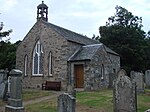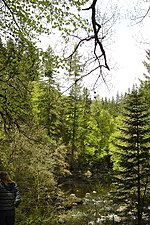Tay Forest Park

Tay Forest Park is forest park in the council area of Perth and Kinross in Scotland. It consists of a network of forests managed by Forestry and Land Scotland (FLS) that are spread across the Highland parts of Perthshire, and covers 194 km2 in total. The park contains a series of disparate woods that are managed for multiple benefits, with an emphasis on recreation facilities for visitors.The park's main visitor centre is at Queen's View, near Loch Tummel, where there is a café, gift shop and interpretive displays. Other smaller centres are located at the following locations: Allean, also close to Loch Tummel Faskally, between Pitlochry and Killiecrankie Carie on the south side of Loch Rannoch Grandtully, between Aberfeldy and Ballinluig Weem, north of Aberfeldy Drummond Hill on the north side of Loch Tay Craigvinean, near Dunkeld and BirnamAt each location there is a car park and waymarked trails for visitors. Some of the site have more facilities, such as toilets.
Excerpt from the Wikipedia article Tay Forest Park (License: CC BY-SA 3.0, Authors, Images).Tay Forest Park
Geographical coordinates (GPS) Address Nearby Places Show on map
Geographical coordinates (GPS)
| Latitude | Longitude |
|---|---|
| N 56.5837412 ° | E -3.664917 ° |
Address
Perth and Kinross
Scotland, United Kingdom
Open on Google Maps









